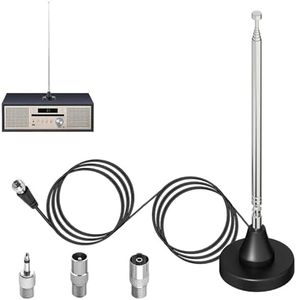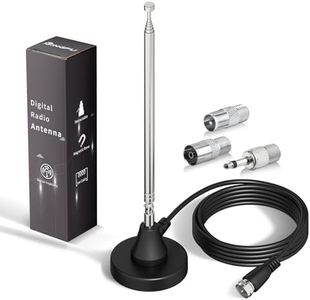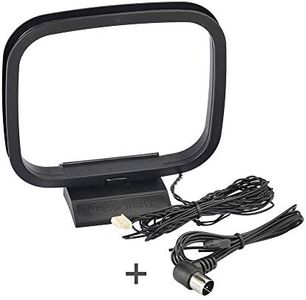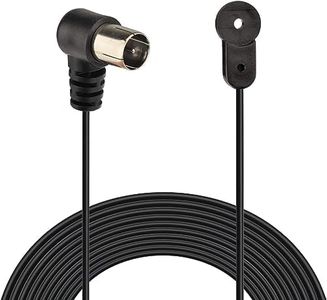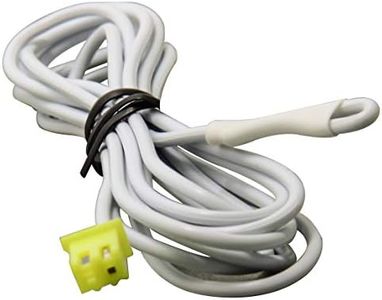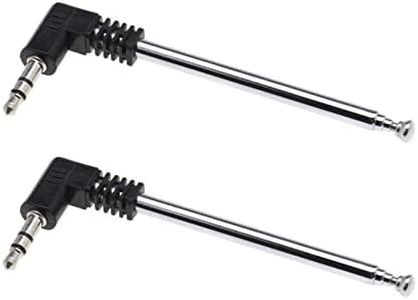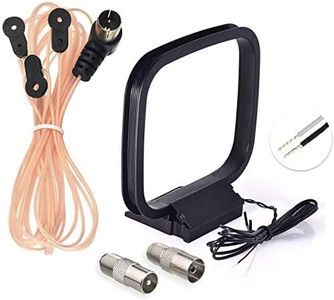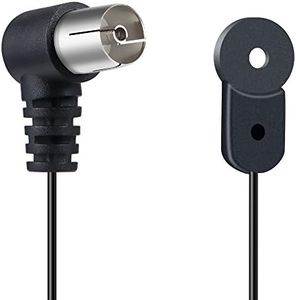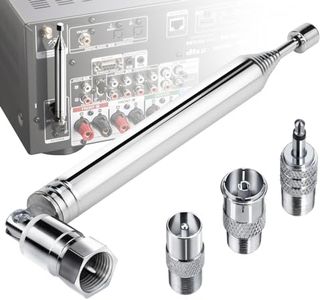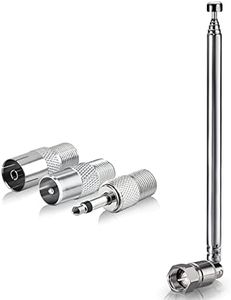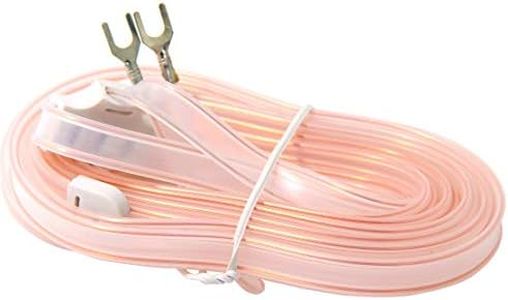We Use CookiesWe use cookies to enhance the security, performance,
functionality and for analytical and promotional activities. By continuing to browse this site you
are agreeing to our privacy policy
10 Best Indoor Fm Antennas
From leading brands and best sellers available on the web.Buying Guide for the Best Indoor Fm Antennas
Choosing the right indoor FM antenna can greatly improve your radio listening experience by helping you receive clear, uninterrupted signals, even in places with challenging reception. When looking for an indoor FM antenna, it’s important to think about your location, the kind of radio you have, and your typical listening habits. Understanding the most important features will help you compare different antennas and find the one that matches your needs best.Antenna TypeAntenna type refers to the physical design and style of the FM antenna, such as dipole (the classic T-shape), wire, loop, or telescopic. This is important because different types are suited for different spaces and types of radios. Dipole antennas are flexible and can be draped or hung for optimal placement, while loop antennas are compact and good for tight places. Telescopic antennas are less obtrusive and work well when space is limited. For larger rooms or if you need more range, dipoles are generally preferred. Consider where you’ll place the antenna and how visible you want it to be—if you want something discreet, look for a slim wire or telescopic type.
Cable LengthCable length determines how far you can position the antenna from your radio or receiver. This is especially important if you need to place the antenna near a window for better reception or want to avoid electronic interference inside the room. Shorter cables (under 3 feet) work if your radio is already near a good reception spot, but longer cables (6 feet or more) give flexibility to reach higher or more open areas. If you often experience poor reception, a longer cable gives you more freedom to move the antenna for the best signal.
Connector TypeConnector type is about how the antenna physically attaches to your radio. Common connectors include bare wire, 3.5mm plug, or coaxial (F-type) connectors. This matters because compatibility with your radio is essential for a secure and stable connection. Most home stereos use coaxial connectors, while portable radios may use a 3.5mm input or bare wires. Before buying, check your radio’s antenna port to make sure you pick an antenna that fits easily without needing adapters.
Reception RangeReception range is the distance over which the antenna can effectively pick up FM radio signals. This is important if you live in an area with weak stations or have lots of interference from buildings or electronics. Some antennas are designed for strong local signals and work well in urban settings, while others are built to pull in distant or weaker stations, making them better for suburban or rural locations. Consider the signal strength in your area: if you only listen to nearby stations, you don’t need the biggest range, but if you want to catch faraway or specialty stations, look for an antenna marketed as having enhanced reception.
Placement FlexibilityPlacement flexibility refers to how easy it is to install and move the antenna to different spots in your room. Some antennas are rigid and must be set upright, while others are flexible and can be taped, hung, or wrapped around objects. This matters because signal quality can change dramatically with placement. If your space is small or tricky, a flexible antenna gives you more options to experiment with locations for the clearest sound. If you like to rearrange your room or move your radio around, choose an antenna that’s easy to reposition.
AmplificationAmplification is an extra feature some antennas have, allowing them to boost weak radio signals electronically for clearer reception. This is only necessary if your radio struggles with static, signal dropouts, or distant stations. Amplified antennas plug into a power source (like a wall outlet or USB) and are most helpful if you’re far from FM stations or live in a building with lots of signal-blocking materials. If you’re close to transmitters or get strong signals already, you probably don’t need amplification—in fact, it can cause distortion if your signal is already strong.
